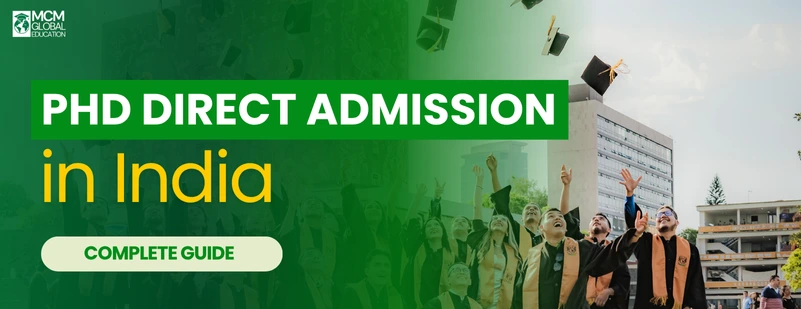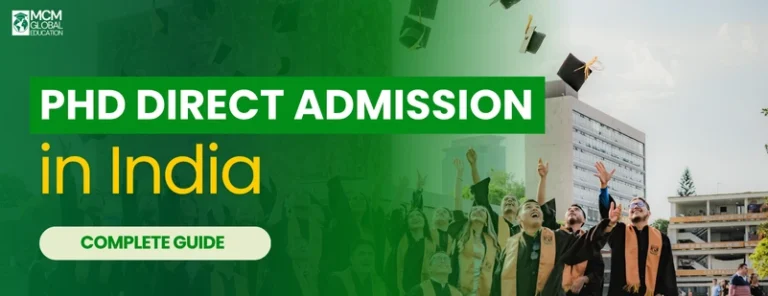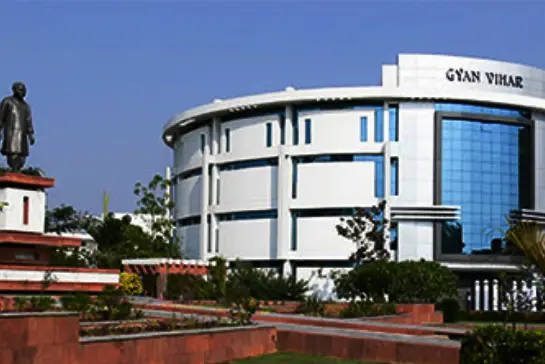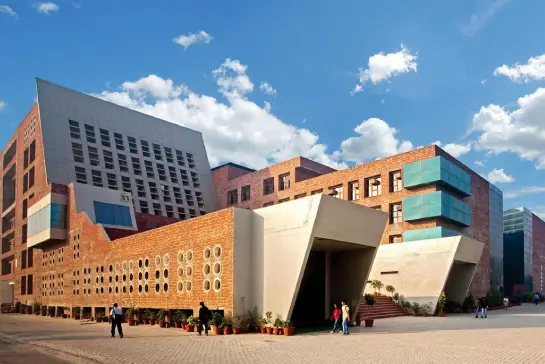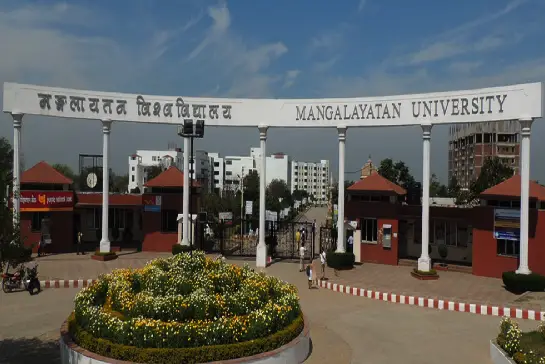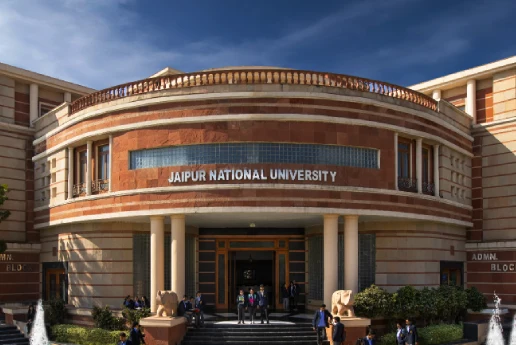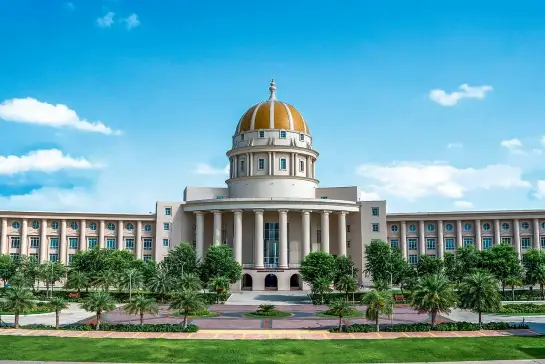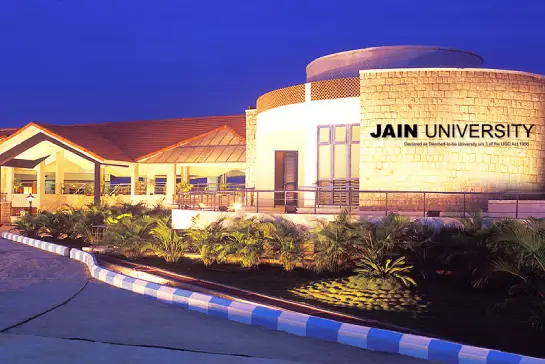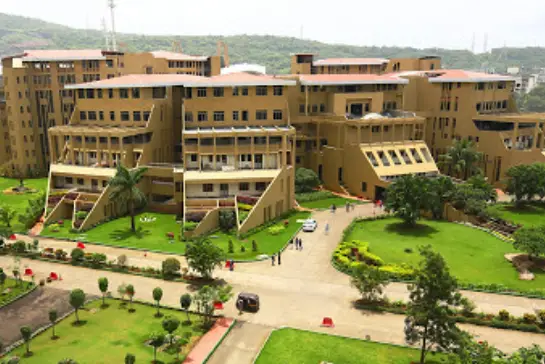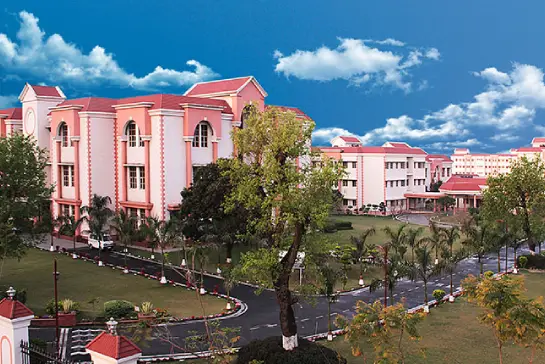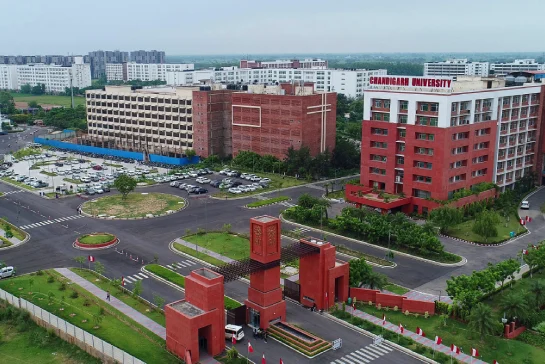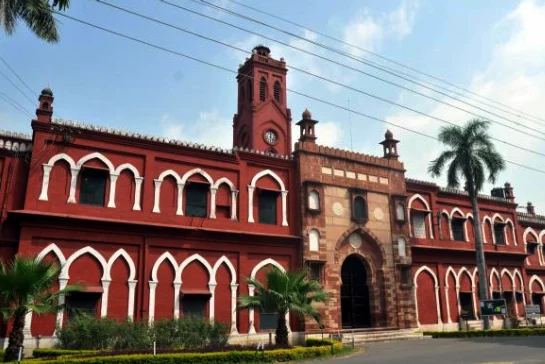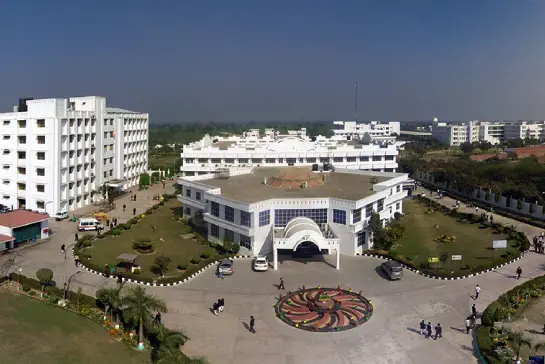Pursuing a doctorate is one of the most advanced forms of academic achievement in India. For many aspirants, the term “PhD direct admission in India” represents an attractive and fast-track route into research, teaching and high-level academic careers. But what exactly does direct admission mean, how can you qualify, and what are the steps, requirements and funding options involved? In this guide we’ll explore everything you need to know about PhD direct admission in India — from eligibility criteria to admission process, coursework, duration, fellowships, and latest regulatory updates.
Table of Contents
What is PhD Direct Admission in India?
“Direct admission” into a PhD typically refers to entry into the doctoral programme without first completing a regular research programme (for example without first doing a full-time MPhil or a two-year full-time research master) and sometimes without undergoing the full entrance exam that many universities require. In many cases, candidates who have qualified UGC-NET/JRF, CSIR-NET, or hold a recognised research fellowship may get an exemption from certain entrance stages and may be allowed to join the PhD directly. The phrase covers:
- Entry to PhD from a master’s degree (rather than first MPhil)
- Admission on the basis of NET/JRF/fellowship or exempted from the entrance test
- Admission in the second semester (or next session) due to existing credentials.
This route appeals especially to candidates who are well-qualified, experienced, or already working in research or industry and wish to leverage their credentials for PhD entry.
Why Consider PhD Direct Admission in India?
There are several compelling reasons why aspirants seek direct admission to a doctoral programme. Some key advantages include:
- Faster entry into doctoral research, reducing the time required compared to sequential pathways.
- Better career prospects: A PhD often opens up faculty positions in universities, research scientist roles, and leadership roles in industry.
- Access to fellowships and funding: Many direct entrants may be eligible for doctoral fellowships from UGC, CSIR, DST, DBT etc.
- Recognition and credibility: A PhD from a reputed institution enhances academic, industry and international opportunities.
- Flexibility for working professionals: Direct admission options may allow part-time or junior research positions while continuing employment.
Eligibility Criteria for PhD Direct Admission in India
While each university and discipline may have its own admission regulations, the typical eligibility criteria for PhD direct admission in India are summarised below:
| Criterion | Typical Requirement |
|---|---|
| Master’s degree | Minimum 55% (or equivalent grade) in a relevant discipline |
| Qualifying examination | UGC-NET/JRF or CSIR/DBT/ICMR fellowship OR university’s own entrance exam |
| Research proposal | Submission of synopsis / research topic and supervisor’s acceptance |
| Work experience | In some cases, 2–3 years of research/industry experience is an added advantage |
| Reservation / quotas | As per university rules (SC/ST/OBC/EWS/PwD) |
Note: Some universities allow BTech/BE + MTech holders in engineering/science to apply for a direct PhD path; others may allow integrated MSc-PhD. Always check the specific regulations of the institution.
Admission Process for PhD Direct Admission in India
Here is a typical step-by-step process for “PhD direct admission in India”:
| Step | Description |
|---|---|
| 1. Notification | University issues PhD admission notice, listing seats, disciplines, etc. |
| 2. Application | Online submission of application form with academic details, research synopsis, etc. |
| 3. Entrance/Exemption | Candidate either appears for entrance test/interview or is exempt due to NET/JRF/fellowship. |
| 4. Selection List | Merit list or interview result is published; direct admissions may be via exempt route. |
| 5. Enrolment | Selected candidate completes enrolment, pays fees, and begins registration for PhD. |
| 6. Coursework | Candidate undergoes mandatory coursework (if required) before full candidature. |
| 7. Research & Thesis | After coursework and registration, candidate engages in research and submits thesis. |
Many universities now publish PhD direct admission guidelines on their websites to ensure transparency. Some recent developments include institutions allowing candidates with NET/JRF to bypass initial tests and get instant admission offers.
Coursework, Duration & Maximum Time Limits
Even in direct admission routes, doctoral programs in India generally follow the regulatory framework of University Grants Commission (UGC) or equivalent statutory bodies. Some key aspects:
- Minimum Duration: 3 years (from date of registration)
- Maximum Duration: 6 years (full-time) and often 8 years (part-time)
- Coursework: Typically 6–8 credits or one semester of research methodology and domain-specific papers before full registration.
- Progress Review: Annual performance review, publication requirement, thesis submission.
| Stage | Typical Duration |
|---|---|
| Coursework / Registration | 6–12 months |
| Research & Writing | 2–4 years (minimum) |
| External Evaluation & Viva | 6–12 months |
Direct admission may shorten the “registration” waiting time but does not reduce the minimum research period mandated for a PhD. Compliance with UGC PhD regulations is essential for the doctoral degree to remain valid.
Funding, Fellowships & Financial Assistance
One of the major concerns for doctoral aspirants is funding. For “PhD direct admission in India”, these are key funding avenues:
- UGC – Junior Research Fellowship (JRF): For NET qualified candidates.
- CSIR / DBT / ICMR / DST INSPIRE Fellowships: Discipline-specific grants in science, biotechnology, etc.
- University Teaching Assistantship / Research Assistantship: Many universities provide tuition waivers and stipend via departmental support.
- Project-based funding: Research projects funded by external agencies that admit PhD students as staff.
- Part-time/industry funded PhD: Working professionals sponsored by companies/universities.
Direct admission routes are especially beneficial for those already holding fellowships or working in research labs, as they can commence research immediately, often with funding in place.
Advantages & Limitations of Direct Admission Approach
Advantages
- Faster route into doctoral research
- Direct transition from master’s degree to PhD
- Suitable for experienced research practitioners
- Potential exemption from entrance test/interview
Limitations
- High standards required (NET/JRF/fellowship)
- University may still require coursework and publication before full registration
- Limited seats and competition for direct admission bids
- Duration norms cannot be shortened — research quality still matters
Understanding both sides helps aspirants make informed decisions about whether direct admission is right for them.
Choosing the Right University & Supervisor
For a successful PhD via direct admission, selecting the right institution and supervisor is critical:
- Check UGC recognition and whether PhD regulations are followed
- Review the faculty credentials, publication record and research interests aligning with your topic
- Ensure the department has research infrastructure (labs, databases, library, funding)
- Clarify admission route – whether direct admission is offered for NET/JRF holders, industry professionals or only via entrance test
- Confirm seat availability, especially for direct-entry positions: Some universities report that candidates with NET/JRF are automatically offered seats for certain years.
- Ask about financial support, fellowship availability, and departmental expectations (publications, conferences).
Latest Updates & Regulatory Framework for PhD in India
- UGC has issued PhD regulations outlining minimum standards, eligibility, coursework requirements, credit hours, etc.
- Many universities now allow exemption from entrance test for NET/JRF qualified candidates or those with high academic credentials.
- Some institutions like Gujarat University and others are moving towards autonomous PhD admission processes to streamline direct admission routes.
- Regulatory emphasis is shifting toward quality of research, ethics, publication standards and relevance, not merely the entry route.
Staying updated on regulatory changes and institutional norms is vital for any candidate aiming for direct admission.
Conclusion
The opportunity for PhD direct admission in India provides a valuable pathway for those who are well-prepared and motivated to pursue high-quality research without long delays. Whether you hold a NET/JRF, are part of a research lab, or are a working professional with strong credentials, this route allows you to fast-track your doctoral ambitions.
Remember, while the entry process might be streamlined, the real success lies in choosing the right institution, securing a suitable supervisor, obtaining funding, conducting quality research, and meeting all regulatory requirements. If your goal is academic leadership, advanced industry research, or teaching at the highest level, then understanding and leveraging the “PhD direct admission in India” pathway in 2026 could be your stepping stone to a distinguished research career.

